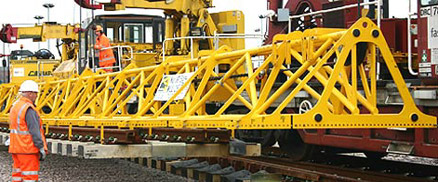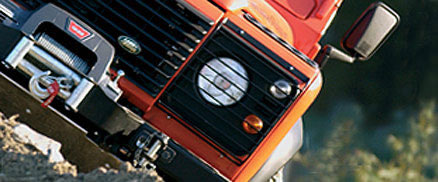February 23rd, 2011
Camlok lifting clamps are the most suited clamps to use for all UK rail track currently in use. The clamps are suitable for lifting beams, rail tracks and other sections of track. The range of Camlok clamps have been designed to lift in a secure and safe way. Currently Camlok offer a wide range of clamps suitable for the rail industry.
CR – Single Rail Clamp
This clamp is designed with a narrow profile which enables safe attachment to individual rail that is stacked side by side with other rails. Once the clamp is positioned it is locked onto the rail-head by using a lever operated spring mechanism. If the rail track is of a longer length then these clamps should be suspended from a lifting beam to operate at full potential.
RP – Rail Pulling Clamp
A rail pulling clamp fits almost most rail sections. This clamp is designed to be used when positioning rail sections. It has a screw shaft mechanism which is used to attach the clamp to the web of the rail. At the end of the screw shaft are hardened steel circular teeth and the opposing pad also has hardened circular steel teeth for a strong grip.
The shaft is supported on a bearing that allows a high degree of angular movement. When a lateral load is applied to the clamp, the pad rotates in a cam action and securely grips the rail web securely and safely.
Posted in Arbil Rail |
February 23rd, 2011
Although chain slings are designed for rugged, lasting service, precautions should be observed to extend the product’s useful life. Certain hazards are inherent in the operation of chain slings and users must exercise intelligence, care and common sense to ensure a safe working environment.
- Never exceed the working load limit of a chain sling.
- All fittings and attachments must have a working load limit (WLL) equal to or greater than that of the chain; if not, the assembly must be rated at the WLL of the weakest component.
- Do not rest or drop load on chain.
- Eliminate all twists, knots or kinks before lifting.
- Do not point load hooks – load should be seated properly within throat opening and centered in bowl of the hook.
- Balance the load to avoid undue stress on one leg of multi-leg slings.
- Use pads around sharp corners.
- Do not use in acid solutions. Consult manufacturer for recommendations.
- If possible, avoid extreme temperatures (under 20 degrees F or over 350 degrees F).
- Temporary and permanent reductions to working load limits occur when chain slings are used at high temperatures.
- Return slings to manufacturer to ensure proper repair procedures are followed.
- Clean chain slings regularly since dirt and grit can cause wear at link bearing points.
- Protect chain from corrosion.
- Store chain slings in a clean, dry area, preferably by hanging on racks or A-frames; slings stored on floors are subject to abuse.
Posted in Arbil Lifting Gear |
February 23rd, 2011
A question that has an easy answer. Of course they need winter tyres. If the tyres offer a good grip then 4×4 driving in the winter is an added bonus.
Many 4×4 owners are misguided into thinking because they have a 4×4 they don’t require winter tyres. However, thinking like this exposes them to unnecessary risks when faced with a tricky situation.
Although these vehicles offer better traction, they are nevertheless heavy and more delicate to manoeuvre when braking or cornering. For 4×4 vehicles to fully reach their potential, their tyres need sufficient grip to hug the wet, snow-covered or icy winter roads.
For these given scenarios on the roads, all major tyre brands have developed special ranges of tires specifically for 4×4 vehicles, including tyres for winter.
These winter tyres have the following characteristics:
- Constructed from materials that are suited to low temperatures
- Have a directional, often asymmetrical tread pattern on them
- Have deep tread pattern with numerous edges
- Have wide longitudinal grooves.
Specialist 4×4 tyres can help you drive safely whatever the road conditions.
Posted in Arbil 4x4 |


